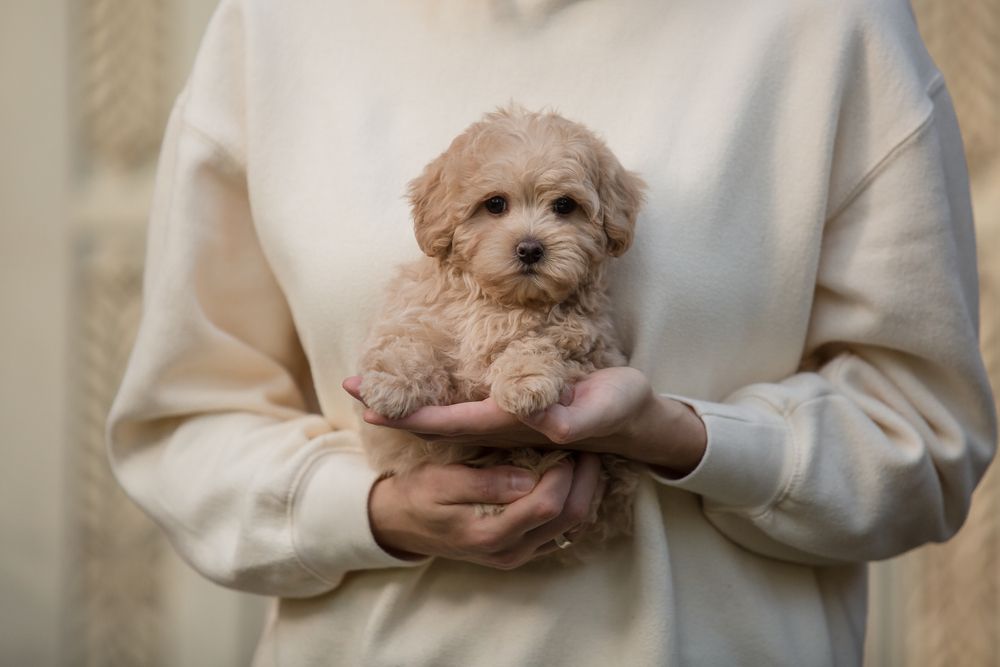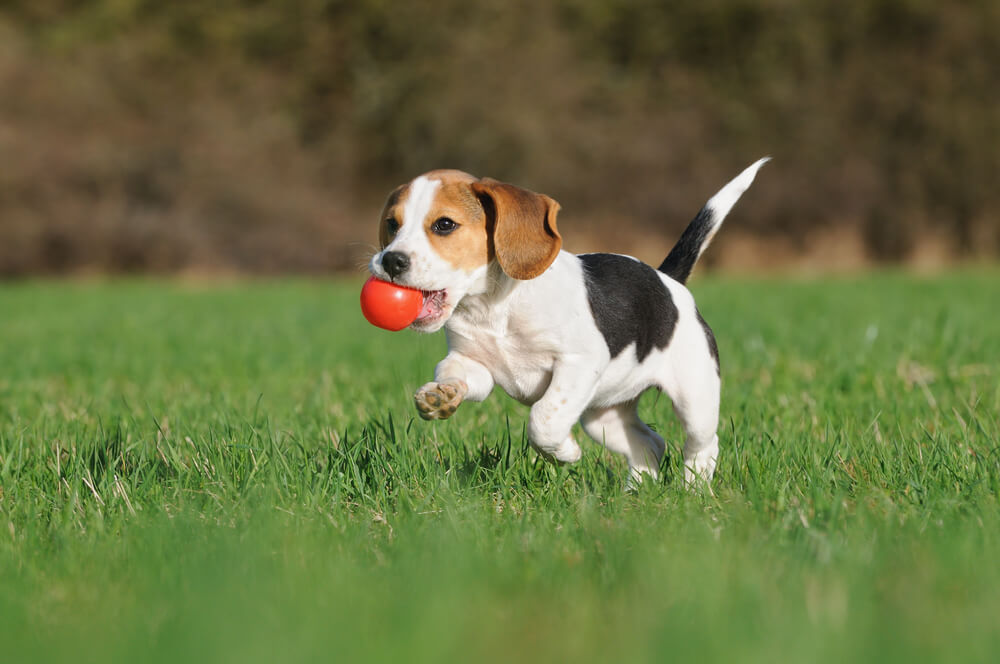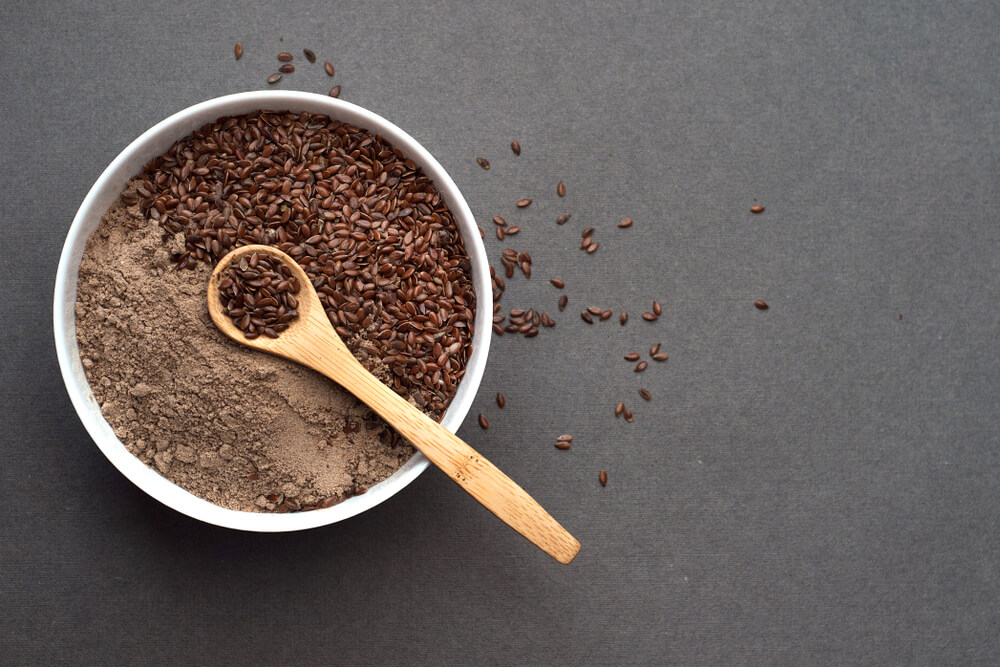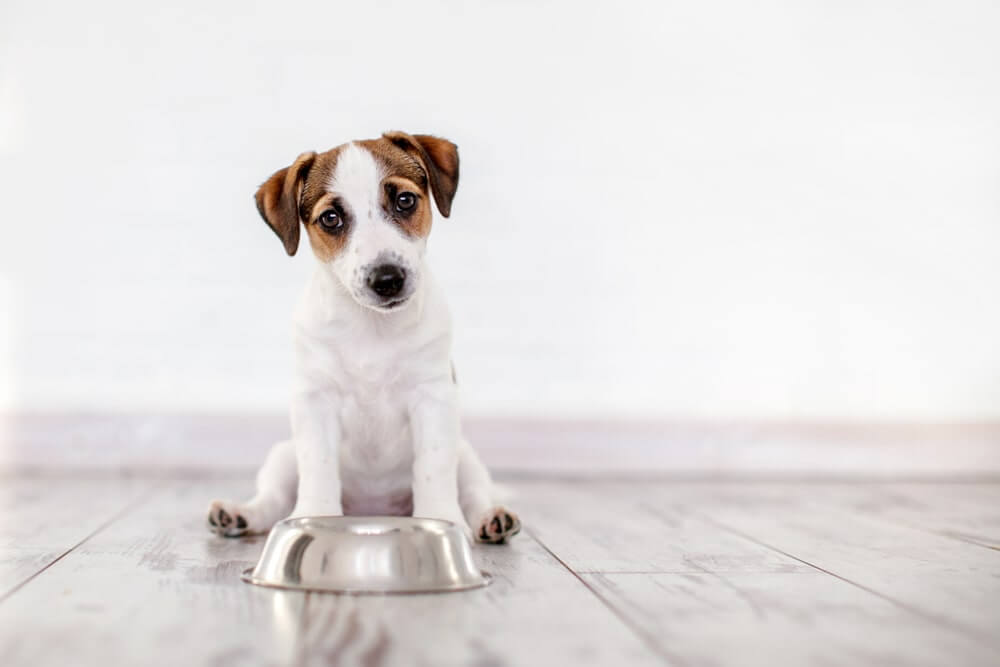Hey Ollie blog readers! We’re offering you an exclusive 60% OFF your starter box! Try now!
You scoop the same food into your dog’s bowl day after day. At first, they ran to it. Tail wagging. Bowl licked clean. But lately? They sniff it, walk away, or take a few bites and lose interest. You start to wonder, “Is my dog just sick of their food?”
It’s a fair question. We humans crave variety. A burger might hit the spot today, but if you ate the same thing every meal for weeks? You’d probably get bored too. But dogs don’t experience food exactly the same way we do.
The real answer to whether dogs get tired of eating the same food every day isn’t black and white. Sometimes what looks like boredom is something else entirely. Sometimes it’s just a sign they’re ready for something better.
Let’s dig into how dogs taste food, what might be causing your pup to turn up their nose, and how to tell if it’s time for a change.
How Dogs Experience Taste and Smell
Dogs have about 1,700 taste buds. That might sound like a lot until you realize we have around 9,000. So while we experience food with a complex range of flavors, dogs are a little more straightforward. They taste salty, sweet, sour, bitter, and umami — but not with nearly the same intensity as we do.
What dogs do have, though, is an incredibly powerful sense of smell. Their noses are packed with over 100 million scent receptors, compared to about 6 million in humans. For dogs, smell is everything. They don’t care as much about flavor as they do about scent, freshness, and texture.
That’s why food straight out of a freshly opened bag smells more interesting to them than something that’s been sitting out. It also explains why fresh, gently cooked meals like Ollie can seem way more exciting than dry kibble. When food smells good to a dog, they’re much more likely to eat it with enthusiasm.
So if your pup isn’t eating, it’s not necessarily because they’re tired of the taste. It might be because the smell isn’t doing anything for them anymore — or because something else is going on.
Do Dogs Get Tired of Their Food?
Short answer: not in the same way people do. Dogs aren’t wired to crave variety like we are. In fact, if their food is meeting their needs and tastes and smells appealing, most dogs are totally fine eating the same thing every day.
That said, they can lose interest over time, especially if they’re eating something that’s highly processed, lacks fresh aroma, or just doesn’t feel good in their body. Dry kibble that’s been sitting in the pantry for weeks can lose its scent and flavor intensity. From your dog’s perspective, it’s like eating stale cereal every day. Not very exciting.
Some dogs will keep eating out of habit. Others will start to slow down or get picky. You might notice signs like:
- Sniffing the bowl, then walking away
- Eating slowly or leaving some food behind
- Showing more interest in your food or treats
- Excitement at mealtime that disappears once the bowl hits the ground
These behaviors don’t always mean they’re “bored.” But they do suggest that something about their food isn’t working for them anymore.
Behavioral vs. Medical Reasons for Food Refusal
It’s easy to assume your dog is just being picky. But before jumping to conclusions, it’s important to rule out other causes—especially health-related ones.
Dogs may refuse food for reasons that have nothing to do with the food itself. Some of the most common non-food-related causes include:
- Stress or anxiety: Changes in routine, a new environment, or loud noises can cause dogs to lose their appetite temporarily.
- Dental pain: If chewing hurts, even the best-smelling meal won’t be appealing.
- Stomach upset: Nausea, gas, or discomfort can lead a dog to associate their food with feeling bad.
- Medical issues: Infections, digestive disorders, or other health problems can reduce appetite.
If your dog suddenly stops eating a food they’ve been fine with for months, a vet visit is a good first step. Once you’ve ruled out a medical cause, then it’s time to look at the food itself, and how to make it more appealing, fresh, and nourishing.
Is It Okay to Feed the Same Food Every Day?
For the most part, yes, as long as the food is complete, balanced, and made with quality ingredients, feeding the same food daily can be perfectly fine for your dog.
Many dogs thrive on routine. They like knowing when and what they’re eating, and a consistent diet can help keep their digestion steady. But over time, even a well-balanced food can start to feel repetitive for some dogs, especially if it’s a dry, highly processed formula with minimal variety in taste or texture.
That’s where offering some rotation or occasional variety can be helpful. Switching up proteins or recipes now and then can:
- Provide a wider range of nutrients
- Keep your dog more mentally engaged with meals
- Reduce the chances of developing sensitivity to one ingredient
- Help picky eaters stay interested in their bowl
Just be sure to make any changes gradually. A slow transition over 7 to 10 days helps avoid stomach upset and gives your dog’s system time to adjust.
Fresh food naturally offers more aroma and flavor variation, even when the core recipe stays the same, so it can often hold a dog’s interest better than dry kibble day after day.
How to Tell if Your Dog Doesn’t Like Their Food
Dogs can’t tell you they’re bored, but their body language usually speaks loud and clear. If your dog isn’t thrilled with what’s in their bowl, here are some signs to watch for:
- They sniff, then walk away: A quick sniff followed by disinterest usually means the food isn’t appealing to them.
- They eat slower than usual: If a once-eager eater is suddenly dragging through meals, something may have changed.
- They leave food behind: Dogs rarely leave food if they love it and feel good eating it.
- They show more interest in your food or treats: Constant begging or scavenging could mean they’re not excited about their own meals.
- Changes in poop or digestion: Gas, loose stools, or inconsistency might point to an issue with how their current food is being digested.
That doesn’t always mean the food is “bad.” It might just be the wrong fit for your dog, or they might benefit from something fresher, more flavorful, or easier on their stomach.

Should You Rotate or Switch Your Dog’s Food?
If your dog seems uninterested in their meals, a thoughtful food rotation might help bring back the excitement. Switching proteins or recipes can keep things fresh, both nutritionally and mentally. But it needs to be done the right way.
Benefits of Rotating Your Dog’s Food:
- More diverse nutrients from different protein and produce sources
- Prevents sensitivity to any one ingredient used long-term
- Keeps picky eaters engaged with new textures and smells
- Supports a healthy gut by exposing the microbiome to different food components
How to Rotate Safely:
- Transition slowly over 7 to 10 days to avoid stomach upset
- Stick to trusted brands with consistent ingredient quality and formulation
- Watch for reactions like itchy skin, gas, or diarrhea that might signal sensitivity
- Avoid changing everything at once—introduce one new variable at a time
You don’t need to switch foods constantly. But rotating between two or three favorite recipes, especially ones your dog already tolerates well, can make meals feel new without compromising digestive health.
Why Dogs Often Respond Better to Fresh Food
There’s a reason so many pet parents say their dog’s mealtime excitement comes back when they switch to fresh food.
Fresh meals made with real, gently cooked ingredients smell and taste different from dry kibble. Dogs notice that. Their noses tell them something is better, before the first bite even hits their tongue.
Here’s What Makes Fresh Food Stand Out:
- Stronger aroma from real meat and veggies
- Moisture-rich texture that’s easier to chew and digest
- No burnt or stale fats like you find in heavily processed dry food
- More variety in color and texture that appeals to your dog’s instincts
- Gently cooked to preserve nutrients without adding fillers or synthetic flavors
With Ollie, every meal is made with fresh, human-grade ingredients and customized to your dog’s needs. Whether you rotate between recipes or stick with one they love, it’s food they’ll actually look forward to.
How Ollie Helps Prevent Food Fatigue
Most dogs don’t need a hundred different meal options—they just need food that’s fresh, smells good, and makes them feel good. That’s exactly what we focus on at Ollie.
Dogs are less likely to get bored or refuse meals when their food actually tastes and smells like food. Our recipes are designed to be both highly digestible and naturally appealing, without relying on artificial flavors or heavy processing.
Here’s How Ollie Keeps Mealtime Exciting:
- Fresh, gently cooked ingredients that retain their aroma and flavor
- Single-protein recipes for picky eaters or dogs with sensitivities
- Custom meal plans so you can switch things up without switching brands
- Natural rotation options—you can alternate between recipes like turkey, beef, chicken, and lamb
- No fillers or weird additives that dull flavor or upset digestion
Because our meals are made fresh and delivered regularly, your dog gets food that hasn’t been sitting in a warehouse or pantry for months. That freshness makes a difference, especially to dogs who rely on smell to decide what’s worth eating.
Take Our Dog Food Quiz For A Personalized Meal Plan For Your Pup!
What to Do If Your Dog Doesn’t Like Their Food
If your dog suddenly starts turning down meals, don’t panic. It’s a common issue—and in most cases, it’s fixable. Here’s a step-by-step way to handle it:
1. Rule out health issues
Check with your vet if the change in appetite is sudden or comes with symptoms like vomiting, diarrhea, or lethargy.
2. Cut back on treats
If your dog is filling up on biscuits, chews, or table scraps, they may be skipping meals because they’re not hungry—or holding out for something better.
3. Try warming the food
Gently heating your dog’s food can enhance the aroma and make it more inviting, especially for older dogs with a weaker sense of smell.
4. Add moisture or mix-ins
For dry kibble, a splash of warm water or a spoonful of pumpkin or bone broth can make a big difference. For fresh food, it’s usually already moist and ready to go.
5. Switch proteins or recipes
If your dog isn’t into beef, try turkey. If they’re tired of chicken, lamb might bring back the excitement. With Ollie, it’s easy to switch between options based on what your dog prefers.
The key is to stay patient and consistent. If your dog has been eating the same thing for months, it might just take a fresh approach to get them interested again.
Keep Mealtime Simple, Fresh, and Enjoyable
Dogs might not crave a five-course tasting menu, but that doesn’t mean they’re immune to food fatigue. While many dogs do just fine eating the same food every day, some need a little more variety, freshness, or just a better bowl experience.
The best way to keep your dog engaged with their food? Feed them something that smells good, tastes great, and supports how they feel—inside and out.
At Ollie, we make that easy. Our fresh meals are made with real meat, veggies, and no fillers, so every bite counts. And with flexible recipe options and a plan built around your dog’s needs, mealtime doesn’t just become healthier—it becomes exciting again.
Ready to see your dog love their food again?
Take the Ollie quiz and build your dog’s personalized meal plan
Fresh food, delivered to your door. No boredom. No guesswork. Just clean bowls and happy pups.
Frequently Asked Questions (FAQ)
Do dogs get tired of the same food every day?
Not usually in the way humans do, but dogs can lose interest if the food lacks smell, flavor, or freshness. Texture and aroma matter more to dogs than variety.
Why won’t my dog eat their food anymore?
It could be boredom, but it might also be medical, behavioral, or related to stress. Dental pain, upset stomach, anxiety, or too many treats could all play a role. If your dog’s eating habits suddenly change, talk to your vet first.
Is it okay to feed my dog the same food every day?
Yes, if the food is nutritionally complete and balanced. But occasional rotation—especially with different protein sources—can offer added benefits and help prevent picky eating.
How do I know if my dog doesn’t like their food?
Signs include sniffing but not eating, eating slowly, leaving food behind, or showing more excitement for other food. Watch for changes in behavior and digestion, too.
What’s the best food for picky dogs?
Fresh food made with real ingredients is often more appealing. Meals with strong aroma, moisture, and variety in texture (like Ollie recipes) are more likely to keep picky dogs interested.
Tagged As:
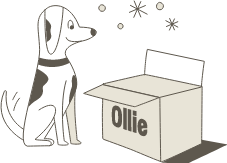
The nutrition your dog needs,
the food they want.

Enjoying our articles? Subscribe our Newsletters and get new articles directly to your inbox
You might also like
18 September 2025
6 MINS READ
Can Dogs Eat Flaxseed? Is Flaxseed Safe For Dogs?
Wondering if flaxseed is safe for your dog? This guide breaks down the benefits, risks, and best ways to add flaxseed, or flaxseed oil, to your pup’s diet.
18 September 2025
6 MINS READ
Why is My Dog Not Eating But Acting Normal? Causes & What To Do
Worried your dog isn’t eating but still acting normal? Here’s what could be going on and what to do to help your pup get their appetite back.
18 September 2025
5 MINS READ
Can Dogs Eat Crab? Is Crab Meat Safe For Dogs?
Thinking about giving your dog crab meat? Find out if it’s safe, what risks to watch for, and when crab might do more harm than good.

